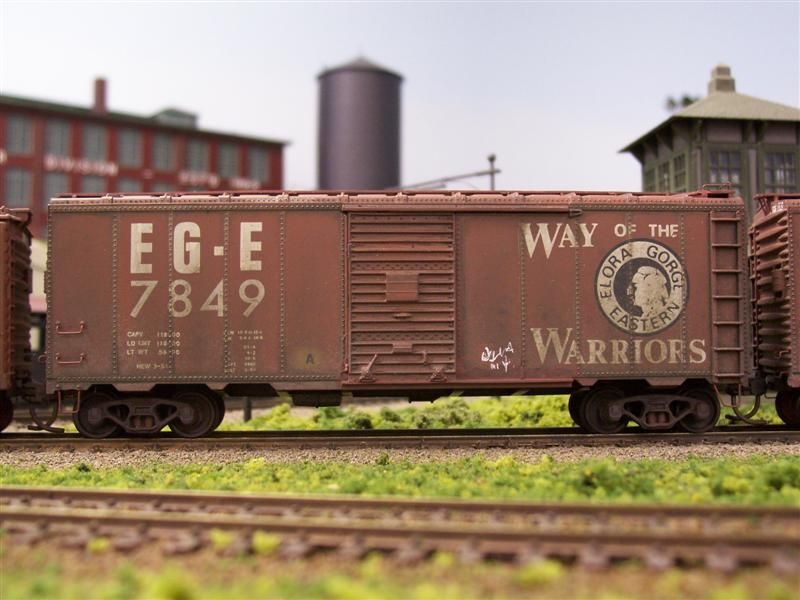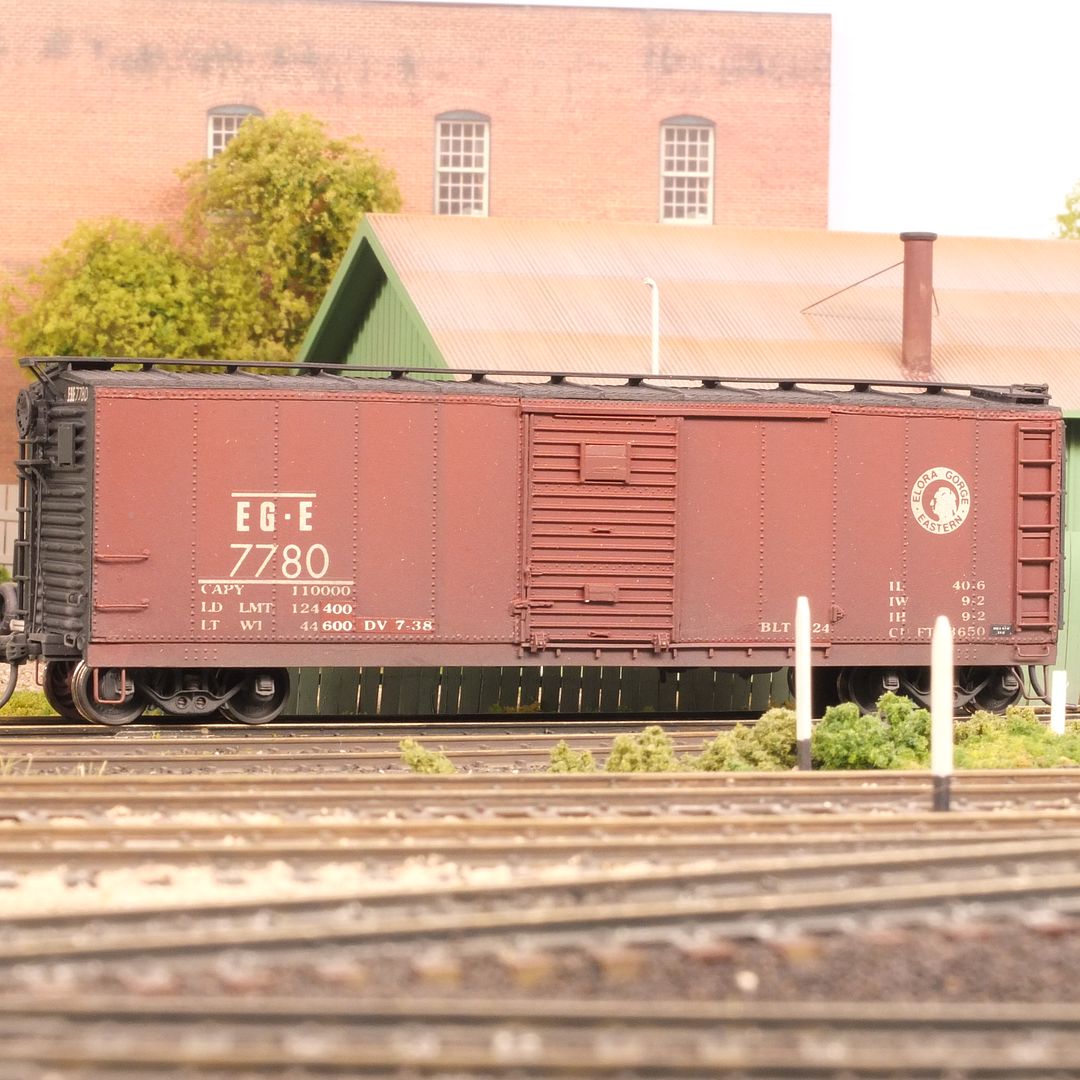Most of my locomotives and rolling stock, and especially the ones with freelanced roadnames were lettered with dry transfers.
I used the large Lettraset sheets (10"x15"), but eventually had custom lettering made by C-D-S, and have gone through three 50 sheet orders, each order differing somewhat from the previous ones.
This was the first custom version, meant only for freight “house cars” (boxcars and reefers) with the only the herald and slogan. The balance of the lettering was done with Lettraset alphabets and numerals, and dimensional data from C-D-S…


…while flatcars, gondolas and hoppers were done with Lettraset alphabets.
The second set included the large reporting marks and numbers, but eliminated the slogan (I had lots of the latter left, as it was only for house cars).
The third set, ordered when I backdated the layout to the late '30s, eliminated all of the large lettering and numerals, the large heralds, and the slogan…

…and when C-D-S closed shop, I ordered decals, in a similar style, from Rail Graphics.
Much of my rolling stock lettered for real railroads also used C-D-S sets, and the roads which they didn’t cover were done with decals, usually from Champ or Microscale.
I always preferred the dry transfers, although it was easier to add the cars’ end numbers and reporting marks by putting the dry transfer lettering onto clear decal paper, and applying it as one-piece decals.
I often used masking tape as a guide for straightness, but also marked it for


